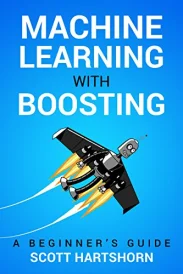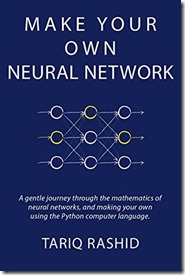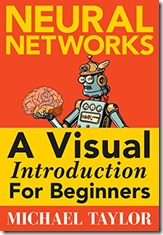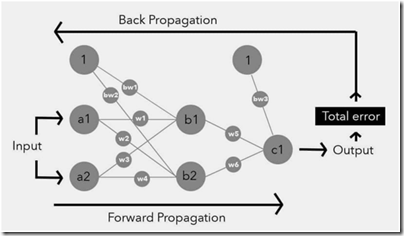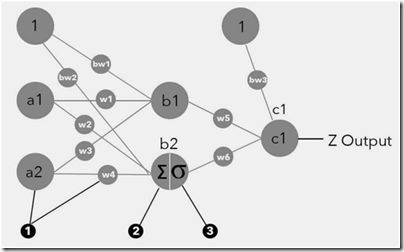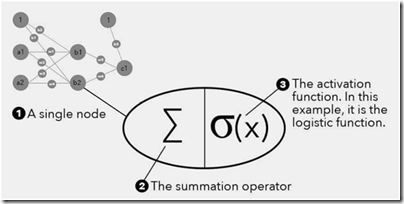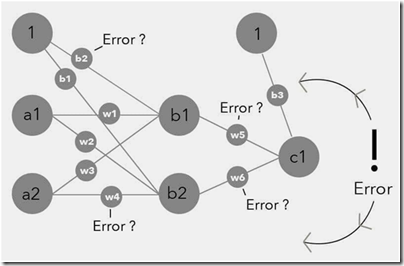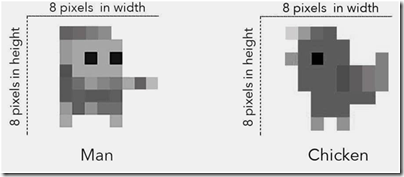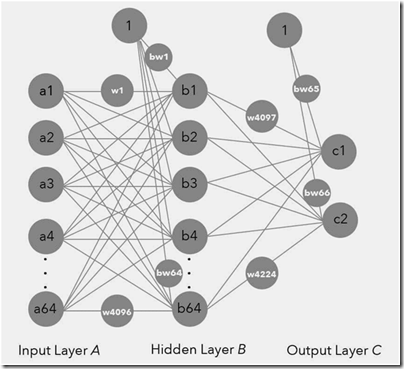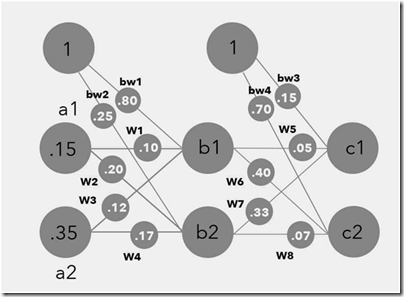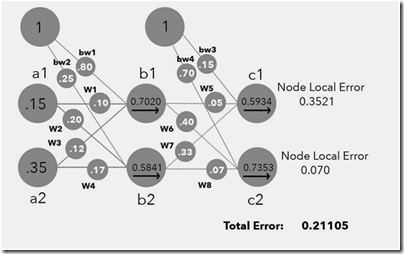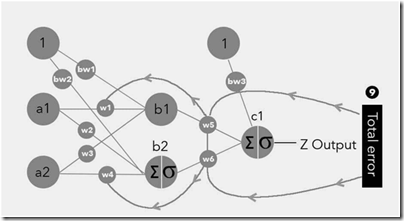
This book gives a a macro picture of machine learning. In this post, I will briefly summarize the main points of the book. One can think of this post as a meta summary as the book itself is a summary of all the main areas of machine learning.
Prologue
Machine learning is all around us, embedded in technologies and devices that we use in our daily lives. They are so integrated with our lives that we often do not even pause to appreciate its power. Well, whether we appreciate or not, there are companies harnessing the power of ML and profiting from it. So, the question arises, whether we need to care about ML at all ? When a technology becomes so pervasive, you need to understand a bit. You can’t control what you don’t understand. Hence at least from that perspective, having a general overview of the technologies involved, matters.
Machine learning is something new under the sun: a technology that builds itself. The artifact in ML is referred to as a learning algorithm. Humans have always been designing artifacts, whether they are hand built or mass produced. But learning algorithms are artifacts that design other artifacts. A learning algorithm is like a master craftsman: every one of its productions is different and exquisitely tailored to the customer’s needs. But instead of turning stone in to masonry or gold in to jewelry, learners turn data into algorithms. And the more data they have, the more intricate the algorithms can be.
At its core, Machine learning is about prediction: predicting what we want, the results of our actions, how to achieve our goals, how the world will change.
The author says that he has two goals in writing this book:
-
Provide a conceptual model of the field,i.e. rough knowledge so that you can use it effectively. There are many learning algorithms out there and many are being invented every year. The book provides an overview of learning algos by categorizing the people who use them. The author calls each category a tribe. Each tribe has its own master algorithm for prediction
-
Symbolists: They view learning as the inverse of deduction and take ideas from philosophy, psychology, and logic.
-
Connectionists: They reverse engineer the brain and are inspired by neuroscience and physics.
-
Evolutionaries: They simulate evolution on the computer and draw on genetics and evolutionary biology.
-
Bayesians: They believe that learning is a form of probabilistic inference and have their roots in statistics.
-
Analogizers: They learn by extrapolating from similarity judgments and are influenced by psychology and mathematical optimization.
In practice each of the master algorithms that a particular tribe uses is good for some type of problems but not for others. What we really want is a single algorithm combining the key features of all of them, The Master Algorithm
-
Enable the reader to invent the master algorithm. A layman, approaching the forest from a distance, is in some ways better placed than the specialist, already deeply immersed in the study of particular trees. The author suggests the reader to pay attention to each tribe and get a general overview of what each tribe does and what tools that each tribe uses. By viewing each tribe as a piece of a puzzle, it would be easy to get a conceptual clarity of the entire field as a whole.
The Machine Learning Revolution
An algorithm is a sequence of instructions telling a computer what to do. The simplest algorithm is : flip a switch. The second simplest algorithm is : combine two bits. The idea connecting transistors and reasoning was understood by Shannon and his masters thesis lead to the most important scientific discipline – information theory. Computers are all about logic. Flipping a set of transistors is all what any algorithm does. However behind this benign activity, some of the most powerful algorithms go about doing their work by using some preexisting algos as building blocks. So, if computing power increases, do all the algos automatically become efficient and all powerful? Not necessarily. The serpent in the garden goes by the name "complexity monster". There are many heads to this complexity monster.
-
Space complexity : the number of bits of info that an algo needs to store in the computer’s memory
-
Time complexity : how long the algo takes to run
-
Human complexity : when algos become too complex, humans cannot control them and any errors in the algo execution causes panic.
Every algorithm has an input and an output – the data goes into the computer, the algo does the job and gives out the result. Machine learning turns this around : in goes the data and the desired result and out comes the algorithm that turns one in to the other. Learning algorithms – learners- are algorithms that make other algorithms. With machine learning, computers write their own programs. The author uses a nice low tech analogy to explain the power of machine learning :
Humans have known a way to get some of the things they need by letting nature make them. In farming, we plant the seeds, make sure they have enough water and nutrients, and reap the grown crops. The promise of machine learning is that the technology can mirror farming. Learning algorithms are the seeds, data is the soil, and the learned programs are the grown plants. The machine learning expert is like a farmer, sowing the seeds, irrigating and fertilizing the soil, and keeping an eye on the health of the crop but otherwise staying out of the way.
This analogy makes two things immediate. First the more data we have, the more we can learn. Second, ML is a sword that can slay the complexity monster. If one looks at any learning algorithm, it does broadly two things. It either learns knowledge or learns some skills, i.e. it learns knowledge in terms of statistical models or learns procedures that underlie a skill. The author talks about another analogy in the information eco-system. He equates databases, crawlers, indexers and so on as herbivores, patiently munging on endless fields of data. Statistical algos, online analytical processing are the predators and learning algorithms are the super predators. Predators turn data in to information and Super predators turn information in to knowledge.
Should one go and spend years in computer science discipline to become ML expert ? Not necessarily. CS makes you think deterministically and ML needs probabilistic thinking. The difference in thinking is a large part of why Microsoft has had a lot more trouble catching up with Google than it did with Netscape. A browser is just a standard piece of software, but a search engine requires a different mind-set.
If you look at all the fantastic stuff behind ecommerce applications, it is all about match making; producers of information are being connected to consumers of information. In this context ,learning algorithms are the match makers. The arsenal of learning algos will serve as a key differentiator between the companies. Data is indeed the new oil.
The chapter ends with a discussion of how political campaigning is being revolutionized by ML. With truck loads of data at each voter level, politicians are turning to ML experts to help them with campaign analysis and directed targeting. The author predicts that in the future, machine learning will cause more elections to be close. What he means by that is that learning algorithms will be ultimate retail politicians.
The Master Algorithm
If you look at any of the algorithms such as nearest neighbor, decision tree, naive Bayes etc., they are all domain agnostic. This warrants a question, "Can there be one learner that does everything, across all domains?". If you have used let’s say a frequentist way of estimating a parameter and subsequently check it with a Bayesian inference, then both parameters give almost the same distribution if there is a LOT of data. Under a deluge of data, you will most certainly get a convergence of parameters in a model, irrespective of the model used. However the reality is that there is a scarcity of data, that necessitates making assumptions. Depending on the type of problem and depending on the type of assumption, certain class of learning models are better than the rest. If one speculates the presence of a master algorithm, then the assumptions also need to go in as input. This chapter explores the presence of a master algorithm that can be learnt from input data, output data and the assumptions. The author grandly states the central hypothesis of the book as
All knowledge-past, present, and future-can be derived from data by a single, universal learning algorithm.
The author speculates the presence of a master algorithm and says that there are arguments from many fields that speculate the presence of one.
The argument from Neuroscience : The evidence from the brain suggests that it uses the same learning algorithm, throughout, with the areas dedicated to the different senses distinguished only by the different inputs they are connected to. In turn, the associative areas acquire their function by being connected to multiple sensory regions, and the "executive" areas acquire theirs by connecting the associative areas and motor output.
If you look at any cortex in a human brain, you find that the wiring pattern is similar. The cortex is organized in to six different layers, feedback loops, short range inhibitory connections and long-term excitatory connections. This pattern is very much common across the brain. There is some variation in the patterns but the structure pretty much is the same. The analogy is that the it is the same algo with different parameters and settings. Low-level motor skills are controlled by cerebellum that has a clearly different and regular architecture. However experiments have shown that cerebellum can be perfectly replaced by cortex. So, this again goes to suggest that there is some "master algorithm" controlling the entire brain.
If you look at a set of learning algos in the ML field, you can infer that at some level they are trying to reverse engineer the brain’s function. One of the five ML tribes, Connectionists, believe in this way of modeling the world.
The argument from Evolution : If one looks at the evolution of species since the beginning of earth, one can think of natural selection or whatever the nature does as an algorithm. This algorithm has all the species as inputs and the species at any given point in time as the output. The master algo does the work of eliminating certain species, allowing certain species to mutate, etc. It is a dynamic process where the outputs are again fed as inputs. This line of thought makes one speculate the presence of a master algorithm. In fact one of the five tribes in the ML world, Evolutionaries, strongly believe in this way of modeling.
The argument from Physics : Most of the physics is driven by simple equations that prune away all the noise in the data and focus on the underlying beauty. Physics laws discovered in one domain are seamlessly applied to other domains. If everything we see in the nature could be explained by few simple laws, then it makes sense that a single algorithm can induce all the can be induced. All the Master Algorithm has to do is provide a shortcut to the laws’ consequences, replacing impossibly long mathematical derivations with much shorter ones based on actual observations. Another way to look at scientific disciplines is to think of various laws, states as outcomes of an dynamic optimization problem. However physics is unique in its simplicity. It’s only reasonably effective.
Machine learning is what you get when the unreasonable effectiveness of mathematics meets the unreasonable effectiveness of data.
The argument from Statistics : Bayesians look at the world from a probabilistic and learning mindset. Bayes rule is a recipe to turn data in to knowledge. In the yesteryears, Bayes applications were confined to simple applications. However with the rise of computing power, Bayes applications are now being used to a wide range of complex modeling situations. Is Bayes the master algorithm ? Well, there seems to many critics to the Bayesian approach of modeling. All said and done, it definitely appears that Bayesian inference will be a part of "Master Algorithm" in some way.
The argument from computer science : The author mentions the famous unsolved problem in computer science, P vs. NP. NP-complete are a set of problems that are equivalent in their computational hardness. If you solve one of the problems, you solve the rest. For decades, many mathematicians, researchers and scientists have been finding clever tricks to almost solve NP-complete problems. But the fundamental problem still eludes us - Is the class of problems for which we can efficiently compute same as the class of problems for which we can efficiently check whether a solution exists ? If you read up on this problem, you will realize that all the NP-complete problems can be reduced to a satisfiability problem. If we invent a learner that can learn to solve satisfiability, it has a good claim to being the Master Algorithm.
NP-completeness aside, the sheer fact that a computer can do a gazillion tasks should make one confident about speculating the presence of a master algorithm that does the job across several problems. The author uses the example of Turing machine and says that back then, it was unthinkable to actually see a Turing machine in action. Turing machine can solve every conceivable problem that can be solved by logical deduction. The fact that we see these machines everywhere means that, despite the odds, we might see a Master Algorithm sometime in the future.
The Master Algorithm is for induction, the process of learning, what the Turing machine is for deduction. It can learn to simulate any other algorithm by reading examples of its input-output behavior. Just as there are many models of computation equivalent to a Turing machine, there are probably many different equivalent formulations of a universal learner. The point, however, is to find the first such formulation, just as Turing found the first formulation of the general-purpose computer.
Interesting analogy : The author is of the opinion that "human intuition" can’t replace data. There have been many instances where human intuition has gone terribly wrong and a guy with lots of data has done better. The author uses Brahe, Kepler and Newton’s work to draw a parallel to the machine learning.
Science goes through three phases, which we can call the Brahe, Kepler, and Newton phases. In the Brahe phase, we gather lots of data, like Tycho Brahe patiently recording the positions of the planets night after night, year after year. In the Kepler phase, we fit empirical laws to the data, like Kepler did to the planets’ motions. In the Newton phase, we discover the deeper truths. Most science consists of Brahe-and-Kepler-like work; Newton moments are rare. Today, big data does the work of billions of Brahes, and machine learning the work of millions of Keplers. If-let’s hope so-there are more Newton moments to be had, they are as likely to come from tomorrow’s learning algorithms as from tomorrow’s even more overwhelmed scientists, or at least from a combination of the two.
Critics of Master Algo : Well, for a concept as ambitious as Master Algo, there are bound to be critics and there are many. The author mentions a few of them as examples,
-
Knowledge engineers
-
Marvin Minsky
-
Naom Chomsky
-
Jerry Fodor
Hedgehog or Fox : One of the other questions that comes up when we think of "Master Algorithm" is whether it is a fox or a hedgehog. There are many studies that have shown that being a fox is far better than being a hedgehog. The hedgehog is synonymous with that of an "expert". In the context of this book though, a learning algorithm can be considered as "hedgehog" if variations of it can solve all the learning problems. The author hopes that the "Master Algorithm" turns out to a hedgehog.
Five tribes of ML : In the quest for master algorithm, we do not have to start from scratch. There are already many decades of ML research underway and each type of research community is akin to a tribe. The author describes five tribes, i.e. symbolists, connectivists, Bayesians, evolutionaries and analogizers. Each of the tribes uses its own master algo. Here is an illustration from the author’s presentation


But the real master algo that the author is hinting at is an algo that combines all the features of the tribes.
The most important feature of each of the tribe is that they firmly believe that theirs is the only way to model and predict. Unfortunately, this thinking hinders their ability to model a broad set of problems. For example, a Bayesian would find it extremely difficult to leave the probabilistic inference method and look at the problem from a evolutionary point of view. His thinking is forged based on priors, posteriors and likelihood functions. If a Bayesian were to look at an evolutionary algorithm like a genetic algo, he might not critically analyze it and adapt it to the problem at hand. This limitation is prevalent across all tribes. Analogizers love support vector machines but there are limited because they look for similarities of inputs across various dimensions; i.e. they are bound to be hit by curse of dimensionality. The same serpent,"the curse of dimensionality" that the author talks about in the previous chapters comes and bites each tribe, depending on the type of problem being solved.
The obvious question that arises in a reader’s mind is, can there be combination of tribes that come together to solve a specific set of problems ? Indeed the tribe categorization is not a hard categorization of the algorithms. It is just meant as a starting point so that you can place the gamut of algos in separate buckets.
Hume’s problem of Induction
The chapter starts with a discussion of "Rationalism vs. Empiricism". The rationalist likes to plan everything in advance before making the first move. The empiricist prefers to try things and see how they turn out. There are philosophers who strongly believe in one and not in the other. From a practical standpoint, there have been productive contributions to our world from both the camps. David Hume is considered to be one of the greatest empiricist of all time. In the context of Machine Learning, one of his questions has hung like a sword of Damocles over all the knowledge, which is,
How can we ever be justified in generalizing from what we’ve seen to what we haven’t?
The author uses a simple example where you have to decide to ask someone out for a date or not. The dataset used in the example illustrates Hume’s problem of induction, i.e. there is no reason to pick one generalization over another. So, a safe way out of the problem, at least to begin with, is to assume that future will be like the past. Is this enough ? Not really. In the ML context, the real problem is : How to generalize to cases that we haven’t seen before. One might think that by amassing huge datasets, you can solve this problem. However once you do the math, you realize that you will run out of data that covers all the cases needed to carry the inductive argument safely. Each new data point is most likely unique and you have no choice but to generalize. According to Hume, there is no way to do it
If this all sounds a bit abstract, suppose you’re a major e-mail provider, and you need to label each incoming e-mail as spam or not spam. You may have a database of a trillion past e-mails, each already labeled as spam or not, but that won’t save you, since the chances that every new e-mail will be an exact copy of a previous one are just about zero. You have no choice but to try to figure out at a more general level what distinguishes spam from non-spam. And, according to Hume, there’s no way to do that.
The "no free lunch" theorem : If you have been reading some general articles in the media on ML and big data, it is likely that you would have come across a view on the following lines:
With enough data, ML can churn out the best learning algo. You don’t have to have strong priors, the fact that you have large data is going to give you all the power to understand and model the world.
The author introduces David Wolpert’s "no free lunch" theorem that a limit on how good a learning algorithm can be. The theorem says that no learner can be better than random guessing. Are you surprised by this theorem ? Here is how one can reconcile to it,
Pick your favorite learner. For every world where it does better than random guessing, I, the devil’s advocate, will deviously construct one where it does worse by the same amount. All I have to do is flip the labels of all unseen instances. Since the labels of the observed ones agree, there’s no way your learner can distinguish between the world and the antiworld. On average over the two, it’s as good as random guessing. And therefore, on average over all possible worlds, pairing each world with its antiworld, your learner is equivalent to flipping coins.
How to escape the above the random guessing limit? Just care about the world we live in and don’t care about alternate worlds. If we know something about the world and incorporate it into our learner, it now has an advantage over random guessing. What are the implications of "free lunch theorem" in our modeling world ?
There’s no such thing as learning without knowledge. Data alone is not enough. Starting from scratch will only get you to scratch. Machine learning is a kind of knowledge pump: we can use it to extract a lot of knowledge from data, but first we have to prime the pump.
Unwritten rule of Machine learning : The author states that the principle laid out by Newton in his work, "Principia", that serves as the first unwritten rule of ML
Whatever is true of everything we’ve seen is true of everything in the universe.
Newton’s principle is only the first step, however. We still need to figure out what is true of everything we’ve seen-how to extract the regularities from the raw data. The standard solution is to assume we know the form of the truth, and the learner’s job is to flesh it out. One of the ways to think about creating a form is via "conjunctive concepts", i.e a series of statements with AND as the bridge. The problem with "conjunctive concepts" is that they are practically useless. Real world is driven by "disjunctive concepts", i.e a concept defined by a set of rules. One of the pioneers in this approach of discovering rules was Ryszard Michalski, a Polish computer scientist. After immigrating to the United States in 1970, he went on to found the symbolist school of machine learning, along with Tom Mitchell and Jaime Carbonell.
Overfitting and Underfitting : The author uses the words "blindness" and "hallucination" to describe underfitting and overfitting models. By using ton of hypothesis, you can almost certainly overfit the data. On the other hand, being sparse in your hypothesis set, you can fail to see the true patterns in the data. This classic problem is obviated by doing out-of-sample testing. Is it good enough ? Well, that’s the best that is available without going in to the muddy philosophical debates or alternative pessimistic approaches like that of Leslie Valiant(author of Probably Approximately Correct).
Induction as inverse of deduction : Symbolists work via the induction route and formulate an elaborate set of rules. Since this route is computationally intensive for large dataset, the symbolists prefer something like decision trees. Decision trees can be viewed as an answer to the question of what to do if rules of more than one concept match an instance. How do we then decide which concept the instance belongs to?
Decision trees are used in many different fields. In machine learning, they grew out of work in psychology. Earl Hunt and colleagues used them in the 1960s to model how humans acquire new concepts, and one of Hunt’s graduate students, J. Ross Quinlan, later tried using them for
chess. His original goal was to predict the outcome of king-rook versus king-knight endgames from the board positions. From those humble beginnings, decision trees have grown to be, according to surveys, the most widely used machine-learning algorithm. It’s not hard to see why: they’re easy to understand, fast to learn, and usually quite accurate without too much tweaking. Quinlan is the most prominent researcher in the symbolist school. An unflappable, down-to-earth Australian, he made decision trees the gold standard in classification by dint of relentlessly improving them year after year, and writing beautifully clear papers about them. Whatever you want to predict, there’s a good chance someone has used a decision tree for it.
The Symbolists : The symbolists’ core belief is that all intelligence can be reduced to manipulating symbols. A mathematician solves equations by moving symbols around and replacing symbols by other symbols according to predefined rules. The same is true of a logician carrying out deductions. According to this hypothesis, intelligence is independent of the substrate.
Symbolist machine learning is an offshoot of the knowledge engineering school of AI. The use of computers to automatically learn the rules made the work of pioneers like Ryszard Michalski, Tom Mitchell, and Ross Quinlan extremely popular and since then the field has exploded
What are the shortcomings of inverse deduction?
-
The number of possible inductions is vast, and unless we stay close to our initial knowledge, it’s easy to get lost in space
-
Inverse deduction is easily confused by noise
-
Real concepts can seldom be concisely defined by a set of rules. They’re not black and white: there’s a large gray area between, say, spam and nonspam. They require weighing and accumulating weak evidence until a clear picture emerges. Diagnosing an illness involves giving more weight to some symptoms than others, and being OK with incomplete evidence. No one has ever succeeded in learning a set of rules that will recognize a cat by looking at the pixels in an image, and probably no one ever will.
An interesting example of a success from Symbolists is Eve, the computer that discovered malaria drug. There was a flurry of excitement a year ago, when an article, titled, Robot Scientist Discovers Potential Malaria Drug was published in Scientific American. This is the kind of learning that Symbolists are gung-ho about.
How does your brain learn ?
This chapter covers the second tribe of the five tribes mentioned in the book. This tribe is called "Connectionists". Connectionists are highly critical about the way Symbolists work as they think that describing something via a set of rules is just the tip of iceberg. There is lot more going under the surface that formal reasoning can’t see. Let’s say you come across the word "love", Symbolists would associate a rule with such a concept whereas Connectionists would associate various parts of the brain to such a concept. In a sense, there is no one to one correspondence between a concept and a symbol. Instead the correspondence is many to many. Each concept is represented by many neurons, and each neuron participates in representing many different concepts. Hebb’s rule is the corner stone of connectionists. In a non-math way, it says that "Neurons that fire together stay together". The other big difference between Symbolists and Connectionists is that the former tribe believes in sequential processing whereas the latter tribe believes in parallel processing.
To get some basic understanding of the key algos used by connectionists, it is better to have a bit of understanding of the way neuron is structured in our brain. Here is a visual that I picked up from the author’s presentation :

The branches of the neuron connect to others via synapses and basic learning takes place via synaptic connections. The first formal model of a neuron was proposed by Warren McCulloch and Walter Pitts in 1943. It looked a lot like the logic gates computers are made of. The problem with this model was that the model did not learn. It was Frank Rosenblatt who came up with the first model of learning by giving variable weights to the connections between neurons. The following is a good schematic diagram of the perceptron:

This model generated a lot of excitement and ML received a lot of funding for various research projects. However this excitement was short lived. Marvin Minsky and few others published many examples where perceptron failed to learn. One of the most simple and dangerous example that perceptron could not learn was XOR operator. Perceptron was mathematically unimpeachable, searing in its clarity, and disastrous in its effects. Machine learning at the time was associated mainly with neural networks, and most researchers (not to mention funders) concluded that the only way to build an intelligent system was to explicitly program it. For the next fifteen years, knowledge engineering would hold center stage, and machine learning seemed to have been consigned to the ash heap of history.
Fast forward to John Hopfield work on spin glasses, there was a reincarnation of perceptron
Hopfield noticed an interesting similarity between spin glasses and neural networks: an electron’s spin responds to the behavior of its neighbors much like a neuron does. In the electron’s case, it flips up if the weighted sum of the neighbors exceeds a threshold and flips (or
stays) down otherwise. Inspired by this, he defined a type of neural network that evolves over time in the same way that a spin glass does and postulated that the network’s minimum energy states are its memories. Each such state has a "basin of attraction" of initial states that converge to it, and in this way the network can do pattern recognition: for example, if one of the memories is the pattern of black-and-white pixels formed by the digit nine and the network sees a distorted nine, it will converge to the "ideal" one and thereby recognize it. Suddenly, a vast body of physical theory was applicable to machine learning, and a flood of statistical physicists poured into the field, helping it break out of the local minimum it had been stuck in.
The author goes on to describe "Sigmoid" function and its ubiquitous nature. If you think about the curve for sometime, you will find it everywhere. I think the first time I came across this function was in Charles Handy’s book, "The Age of Paradox". Sigmoid functions in that book are used to describe various types of phenomenon that show an exponential slow rate of increase in the beginning, then a sudden explosive rate of increase and subsequently with an exponential rate of decrease. Basically if you take the first derivative of the Sigmoid function, you get the classic bell curve. I think the book,"The Age of Paradox" had a chapter with some heavy management gyan that went something like – "you need to create another Sigmoid curve in your life before the older Sigmoid curve starts a downfall" or something to that effect. I don’t quite recollect the exact idea from Charles Handy’s book, but there is a blog post by Bret Simmons, titled The Road to Davy’s Bar that goes in to related details.
Well, in the context of ML, the application of Sigmoid curve is more practical. It can be used to replace the step function and suddenly things become more tractable. A single neuron can learn a straight line but a set of neurons, i.e multi-layer perceptron can learn more convoluted curves. Agreed there is a curse of dimensionality here, but if you think about it, the hyperspace explosion is a double edged sword. On the one hand, there objective function is far more wiggly but on the other hand, there is a less scope that you will stuck at a local minimum via gradient search methods. With this Sigmoid input and multi layer tweak, Perceptron came back with vengeance. There was a ton of excitement just like the time when perceptron was introduced. The algorithm by which the learning takes place is called "back propagation", a term that is analogous to how human brains work. This algo was invented by David Rumelhart in 1986. It is a variant of gradient descent method. There is no mathematical proof that Back propagation will find the global minimum/maximum, though. The backprop solves what the author calls "credit assignment" problem. In a multi-layered perceptron the error between the target value and the current value needs to be propagated across all layers backward. The basic idea of error propagation, i.e error assignment for each of the layers is done via backprop.
Whenever the learner’s "retina" sees a new image, that signal propagates forward through the network until it produces an output. Comparing this output with the desired one yields an error signal, which then propagates back through the layers until it reaches the retina. Based on this returning signal and on the inputs it had received during the forward pass, each neuron adjusts its weights. As the network sees more and more images of your grandmother and other people, the weights gradually converge to values that let it discriminate between the two.
Sadly the excitement phase petered down as learning with dozens of hundreds of hidden layers was computationally difficult. In the recent years though, backpropagation has made a comeback thanks to huge computing power and big data. It now goes by the technique "Deep Learning". The key idea of deep learning is based on auto encoders that is explained very well by the author. However there are many things that need to be worked out for deep learning to be anywhere close to the Master algorithm. All said and done there are a few limitations to exclusively following a connectionist tribe. Firstly, the learning algo is difficult to comprehend. It comprises convoluted connections between various neurons. The other limitation is that the approach is not compositional, meaning it is divorced from the way a big part of human cognition works.
Evolution : Nature’s Learning Algorithm
The chapter starts with the story of John Holland, the first person to have earned a PhD in computer science in 1959. Holland is known for his immense contribution to Genetic algorithms. His key insight lay in coming up with a fitness function that would assign a score to every program considered. What’s the role of fitness function ? Starting with a population of not-very-fit individuals-possibly completely random ones-the genetic algorithm has to come up with variations that can then be selected according to fitness. How does nature do that? This is where the genetic part of the algorithm comes in. In the same way that DNA encodes an organism as a sequence of base pairs, we can encode a program as a string of bits. Variations are produced by crossovers and mutations. The next breakthrough in the field of genetic programming came from Holland’s student John Koza who came up with the idea of evolving full blown computer programs.
Genetic programming’s first success, in 1995, was in designing electronic circuits. Starting with a pile of electronic components such as transistors, resistors, and capacitors, Koza’s system reinvented a previously patented design for a low-pass filter, a circuit that can be used for things like enhancing the bass on a dance-music track. Since then he’s made a sport of reinventing patented devices, turning them out by the dozen. The next milestone came in 2005, when the US Patent and Trademark Office awarded a patent to a genetically designed factory optimization system. If the Turing test had been to fool a patent examiner instead of a conversationalist, then January 25, 2005, would have been a date for the history books. Koza’s confidence stands out even in a field not known for its shrinking violets. He sees genetic programming as an invention machine, a silicon Edison for the twenty-first century.
A great mystery in genetic programming that is yet to be solved conclusively is the role of crossover. None of Holland’s theoretical results show that crossover actually helps; mutation suffices to exponentially increase the frequency of the fittest schemas in the population over time. There were other problems with genetic programming that finally made ML community at large divorce itself from this tribe
Evolutionaries and connectionists have something important in common: they both design learning algorithms inspired by nature. But then they part ways. Evolutionaries focus on learning structure; to them, fine-tuning an evolved structure by optimizing parameters is of secondary importance. In contrast, connectionists prefer to take a simple, hand-coded structure with lots of connections and let weight learning do all the work. This is machine learning’s version of the nature versus nurture controversy. As in the nature versus nurture debate, neither side has the whole answer; the key is figuring out how to combine the two. The Master Algorithm is neither genetic programming nor backprop, but it has to include the key elements of both: structure learning and weight learning. So, is this it ? Have we stumbled on to the right path for "Master Algorithm" ? Not quite. There are tons of problems with evolutionary algos. Symbolists and Bayesians do not believe in emulating nature. Rather, they want to figure out from first principles what learners should do. If we want to learn to diagnose cancer, for example, it’s not enough to say "this is how nature learns; let’s do the same." There’s too much at stake. Errors cost lives. Symbolists dominated the first few decades of cognitive psychology. In the 1980s and 1990s, connectionists held sway, but now Bayesians are on the rise.
In the Church of the Reverend Bayes
Perci Diaconis in his paper titled, MCMC Revolution, says that MCMC technique that came from Bayesian tribe has revolutionized applied mathematics. Indeed, thanks to high performance computing ability, Bayes is now a standard tool in any number cruncher’s tool kit. This chapter talks about various types of Bayesian techniques. The basic idea behind Bayes is that it is a systematic and quantified way of updating degrees of belief, in the light of new data. You can pretty much cast any problem, irrespective of the size of the data available, in to a Bayesian inference problem. Bayes theorem usually goes by the name "inverse probability" because in real life we know Pr(effect|cause) and we are looking to compute Pr(cause|effect). Bayes’ theorem as a foundation for statistics and machine learning is bedeviled not just by computational difficulty but also by extreme controversy. The main point of conflict between Bayesians and Non-Bayesians is the reliance of subjective priors to "turn on the Bayesian crank". Using subjective estimates as probabilities is considered sin by Frequentists, for whom, everything should be learned from the data.
One of the most common variant of Bayesian models is the "Naive Bayes" model where each cause is independent of other causes in creating an effect. Even though this assumption sounds extremely crazy, there are a ton of areas where Naive Bayes beats sophisticated models. No one is sure who invented the Naïve Bayes algorithm. It was mentioned without attribution in a 1973 pattern recognition textbook, but it only took off in the 1990s, when researchers noticed that, surprisingly, it was often more accurate than much more sophisticated learners. Also if you reflect a bit, you will realize that Naive Bayes is closely related to Perceptron algorithm.
The author mentions Markov Models as the next step in the evolution of Bayes models. Markov models are applicable to a family of random variables where each variable is conditionally independent of its history except the current state. Markov chains turn up everywhere and are one of the most intensively studied topics in mathematics, but they’re still a very limited kind of probabilistic model. A more complicated model is Hidden Markov Model where we don’t get to see the actual states but we have to infer them from the observations. A continuous version of HMM goes under the name "Kalman Filter" that has been used in many applications across domains.
Naive Bayes, Markov Models, Hidden Markov Models are all good but they are all a far cry from Symbolists. The next breakthrough came from Judea Pearl who invented Bayesian Networks. This allowed one to specify complex dependencies among random variables. By defining the conditional independence of a variable given a set of neighboring nodes, Bayesian networks tame the combinatorial explosion and make inferences tractable. Basically Bayesian Network can be thought of as a "generative model", a recipe for probabilistically generating a state of the world. Despite the complex nature of a Bayesian net, the author mentions that there have been techniques developed to successfully infer various aspects of the network. In this context, the author mentions MCMC and gives an intuitive explanation of the technique. A misconception amongst many is that MCMC is a simulation technique. Far from it, the procedure does not simulate any real process; rather it is an efficient way to generate samples from a Bayesian network. Inference in Bayesian networks is not limited to computing probabilities. It also includes finding the most probable explanation for the evidence. The author uses the "poster child" example of inferring the probability of heads from coin tosses to illustrate the Bayesian technique and compare it with the Frequentist world of inference.
The next set of models that came to dominate the Bayesian tribe is Markov Networks. A Markov network is a set of features and corresponding weights, which together define a probability distribution. Like Bayesian networks, Markov networks can be represented by graphs, but they have undirected arcs instead of arrows. Markov networks are a staple in many areas, such as computer vision. There are many who feel that Markov networks are far better than Naive Bayes, HMMs etc., as they can capture the influence from surroundings.
Bayesians and symbolists agree that prior assumptions are inevitable, but they differ in the kinds of prior knowledge they allow. For Bayesians, knowledge goes in the prior distribution over the structure and parameters of the model. In principle, the parameter prior could be anything we please, but ironically, Bayesians tend to choose uninformative priors (like assigning the same probability to all hypotheses) because they’re easier to compute with. For structure, Bayesian networks provide an intuitive way to incorporate knowledge: draw an arrow from A to B if you think that A directly causes B. But symbolists are much more flexible: you can provide as prior knowledge to your learner anything you can encode in logic, and practically anything can be encoded in logic-provided it’s black and white.
Clearly, we need both logic and probability. Curing cancer is a good example. A Bayesian network can model a single aspect of how cells function, like gene regulation or protein folding, but only logic can put all the pieces together into a coherent picture. On the other hand, logic can’t deal with incomplete or noisy information, which is pervasive in experimental biology, but Bayesian networks can handle it with aplomb.Combining connectionism and evolutionism was fairly easy: just evolve the network structure and learn the parameters by backpropagation. But unifying logic and probability is a much harder problem.
You are what you resemble
The author introduces techniques of the "Analogizers" tribe. This tribe uses similarities among various data points to categorize them in to distinct classes. In some sense, we all learn by analogy. Every example that illustrates an abstract concept is like an analogy. We learn by relating the similarity between two concepts and then figure what else one can infer based on the fact that two concepts are similar.
The chapter begins with explaining the most popular algorithm of the tribe, "the nearest neighbor algorithm". This was invented way back in 1951 by Evelyn Fix and Joe Hodges. The inventors faced a massive difficulty in publishing their algorithm. However the fact that the algo remained unpublished did not faze many researchers who went about developing variants of the algorithm like "K nearest neighbor" method, "Weighted K-nearest neighbor" etc. It was in 1967 that Tom Cover and Peter Hart proved that, given enough data, nearest-neighbor is at worst only twice as error-prone as the best imaginable classifier. This was a momentous revelation. Up until then, all known classifiers assumed that the frontier had a very specific form, typically a straight line. This was a double-edged sword: on the one hand, it made proofs of correctness possible, as in the case of the perceptron, but it also meant that the classifier was strictly limited in what it could learn. Nearest-neighbor was the first algorithm in history that could take advantage of unlimited amounts of data to learn arbitrarily complex concepts. No human being could hope to trace the frontiers it forms in hyperspace from millions of examples, but because of Cover and Hart’s proof, we know that they’re probably not far off the mark.
Is nearest neighbor algo, the master algorithm ? It isn’t because of curse of dimensionality. As the dimension of covariates goes up, the NN algo efficiency goes down. In fact the curse of dimensionality is the second most important stumbling block in the Machine learning, over-fitting being the first one. There are certain techniques to handle the dimension explosion but most of them are hacks and there is no guarantee that they are going to work.
Subsequently, the author introduces Support Vector Machines(SVM) that has become the most popular technique used by Analogizers. I loved the way author describes this technique using plain simple English. He asks the reader to visualize a fat serpent that moves between two countries that are at war. The story of finding the serpent incorporates pretty much all the math that is needed to compute support vectors, i.e.
My guess is, one would understand the math far easier, after reading through this section on SVMs. SVMs have many advantages and the author highlights most of them. Books such as these also help us in verbalizing math stuff in simple words. For example, if you were to explain the difference between constrained optimization and unconstrained optimization to a taxi driver, how would you do it? Read this book to check whether your explanation is better than what the author provides.
Towards the end of the chapter, the author talks about case-based reasoning and says that in the years to come, analogical reasoning will become so powerful that it will sweep through all the fields where case-based reasoning is still employed.
Learning without a teacher
Unlike the previous chapters that focused on labeled data, this chapter is learning via unsupervised learning. Cognitive scientists describe theories of child learning using algos and machine learning researchers have developed techniques based on them. The author explains k-means algorithm, a popular clustering technique. It is actually a special case of Expectation Maximization(EM) algorithm that was invented by three Harvard statisticians. EM is used in a ton of places. To learn hidden Markov models, we alternate between inferring the hidden states and estimating the transition and observation probabilities based on them. Whenever we want to learn a statistical model but are missing some crucial information (e.g., the classes of the examples), we can use EM. Once you have a cluster at the macro level, nothing stops you from using the same algo for each cluster and come up with sub-clusters etc.
Subsequently, the author introduces another popular technique for unsupervised learning, PCA, that is used for dimensional reduction. PCA tries to come up linear combination of various dimensions in the hyperspace so that total variance of the data across all dimensions is maximized. A step up to this algo is called "Isomap", a nonlinear dimensionality reduction technique. It connects each data point in a high-dimensional space (a face, say) to all nearby points (very similar faces), computes the shortest distances between all pairs of points along the resulting network and finds the reduced coordinates that best approximate these distances.
After introducing clustering and dimensional reduction techniques, the author talks about "Reinforcement learning", a technique that relies on immediate response of the environment for various actions of the learner. Research on reinforcement learning started in earnest in the early 1980s, with the work of Rich Sutton and Andy Barto at the University of Massachusetts. They felt that learning depends crucially on interacting with the environment, but supervised algorithms didn’t capture this, and they found inspiration instead in the psychology of animal learning. Sutton went on to become the leading proponent of reinforcement learning. Another key step happened in 1989, when Chris Watkins at Cambridge, initially motivated by his experimental observations of children’s learning, arrived at the modern formulation of reinforcement learning as optimal control in an unknown environment. A recent example of a successful startup that combines neural networks and reinforcement learning is "DeepMind", a company that was acquired by Google for half a billion dollars.
Another algorithm that has a potential to be a part of "Master Algorithm" is chunking. Chunking remains a preeminent example of a learning algorithm inspired by psychology. The author gives a basic outline of this concept. Chunking and reinforcement learning are not as widely used in business as supervised learning, clustering, or dimensionality reduction, but a simpler type of learning by interacting with the environment is: A/B testing. The chapter ends with the author explaining another potentially killer algo, "relational learning".
The Pieces of the Puzzle Fall into Place
Progress in science comes from unifying theories; two or more seemingly disparate observations are driven by the same logic or law. If one looks at ML, it appears that Master Algorithm is akin to a unifying theory in science. It will unify all the master algorithms of each tribes, all the techniques of each tribes and give one cohesive way to learn from data.
In fact there is already a technique called "meta learning" that some of the tribes use with in their techniques. For example, bagging, random forests and boosting are some of the famous meta learning techniques used by Symbolists. Bayesians have something called "model averaging" that learns from each model by considering it as an hypothesis and then computes a score based on the vote given by each of the models. Meta learning in its current avatar is remarkably successful, but it’s not a very deep way to combine models. It’s also expensive, requiring as it does many runs of learning, and the combined models can be quite opaque.
The author used the following schematic diagram for each of the tribes, while explaining the rationale of a possible “Master Algorithm”

He then takes the reader through a tour of each of the tribes philosophy and their master algorithms and comes up a unifier, called "Alchemy", that he calls it as the "Master Algorithm". In the process of creating this master algorithm, he introduces Markov Logic Networks and says that they serve for representing the problem. Alchemy uses posterior probability as the evaluation function, and genetic search coupled with gradient descent as the optimizer. The author is wary about Alchemy’s immediate application and says that there is a ton of research that is yet to be done, so that it can become a true Master Algorithm, i.e., one that has the capability to solve hard problems.
This chapter is a little more involved as it tries to connect all the ideas from the previous eight chapters and introduces a way to combine the various pieces of puzzle to create a "Master Algorithm". The chapter will also be very interesting for an aspiring ML researcher who is trying to pick his focus area.
This is the World on Machine Learning
The last chapter of the book discusses the world in which "Master Algorithm" is all pervasive. The author tries to speculate answers to the following questions :
-
Will humans be replaced by machines ?
-
What do you want the learners of the world to know about you ?
-
How good a model of you, a learner, can have ?
-
How will ecommerce shopping experience be ?
-
Will there be a rise of "humanities" disciple after the automation of most of non-human related tasks ?
-
What will the current online dating sites morph in to ?
-
How will the Amazons, Netflixes, Googles of the world change ?
-
What will be the privacy issues in a society where most of the transactions and activities involve, one algo talking to another algo?
-
Will future wars be fought by robots ?
-
Will robot-warfare be viable ?
-
Will AI and Master Algorithm take over the world ?
The author ends the book by saying,
Natural learning itself has gone through three phases: evolution, the brain, and culture. Each is product of the previous one, and each learns faster. Machine learning is the logical next stage of this progression. Computer programs are the fastest replicators on Earth: copying them takes only a fraction of a second. But creating them is slow, if it has to be done by humans. Machine learning removes that bottleneck, leaving a final one: the speed at which humans can absorb change.
 Takeaway :
Takeaway :
This book is a pop-science book for Machine Learning. ML has reached a point where it is not just for geeks anymore. Every one needs to know about it, Every one needs to at least have a conceptual model about the field as it has become all pervasive. Having said that, it would take time to plod though the book if you are a complete newbie to ML. This book is massively appealing to someone who a cursory knowledge of a few ML techniques and wants to have a 10,000 ft. view of the entire fields’ past, present and future. The future, as the title of book states is, would be the invention of a master algorithm that unifies methods across all the five tribes.
